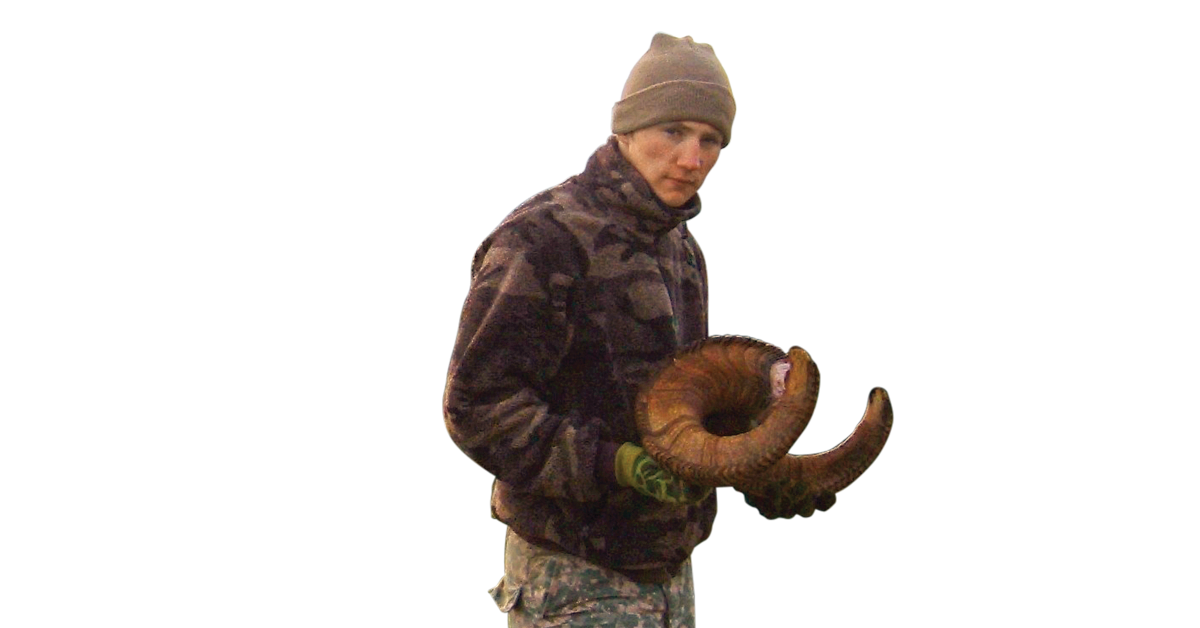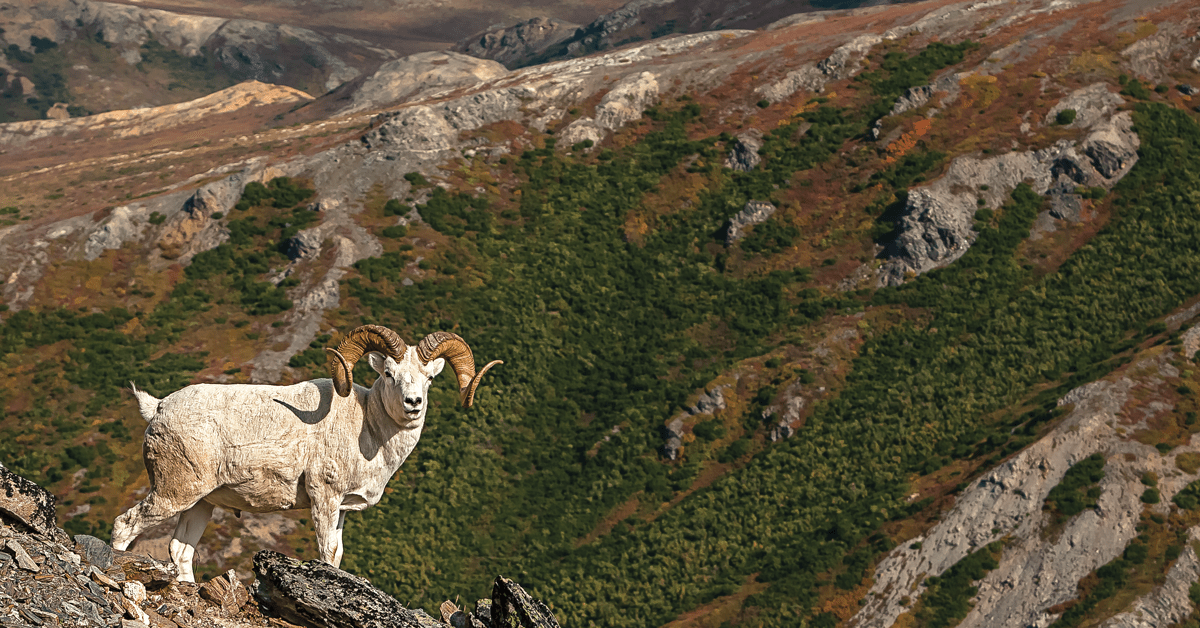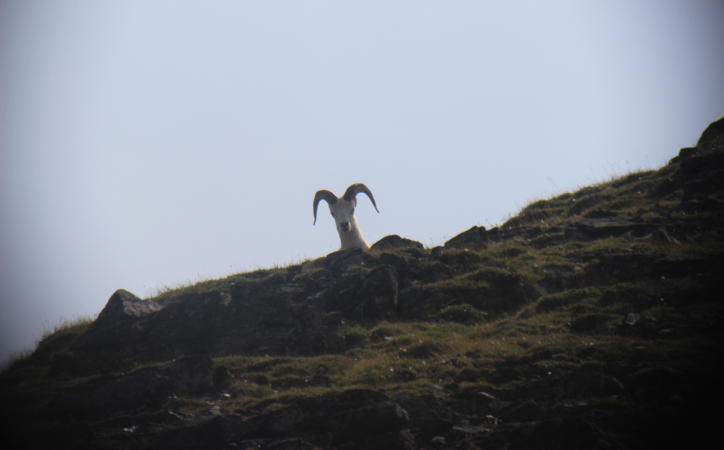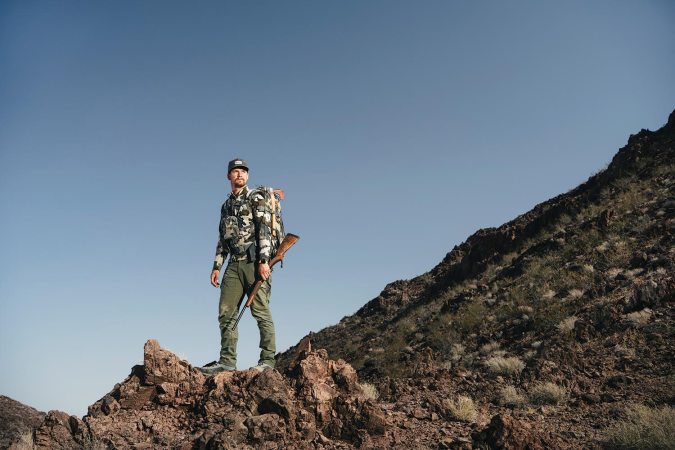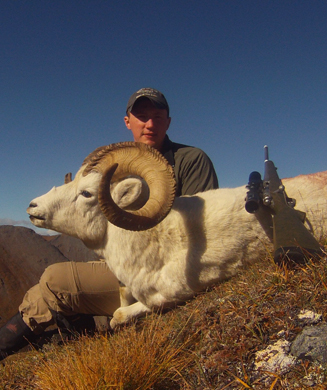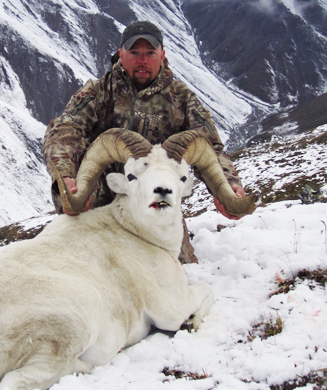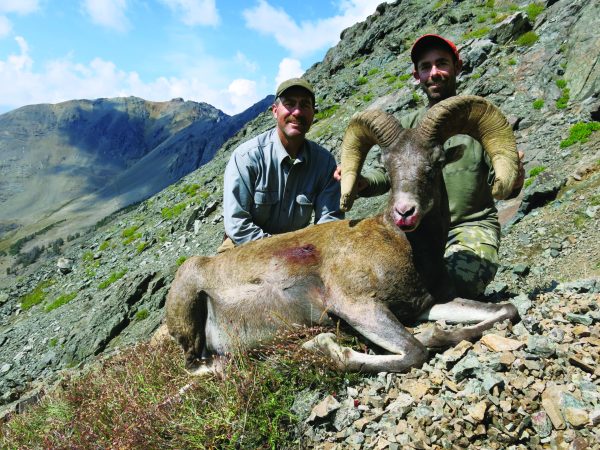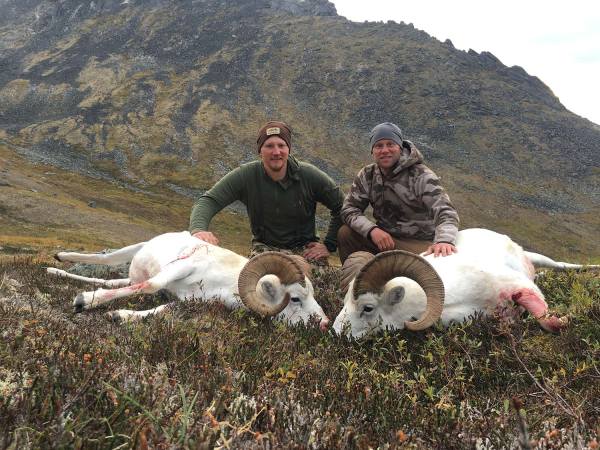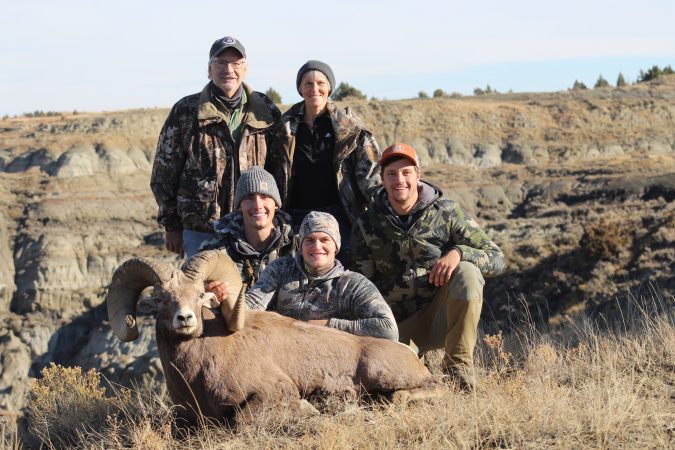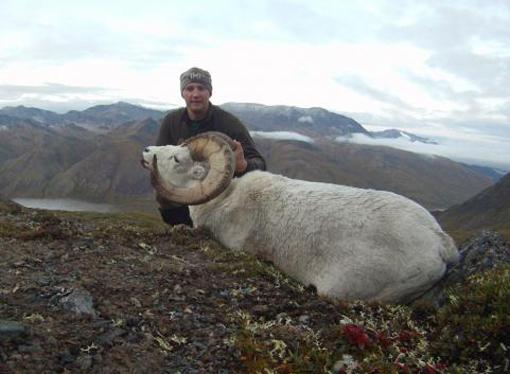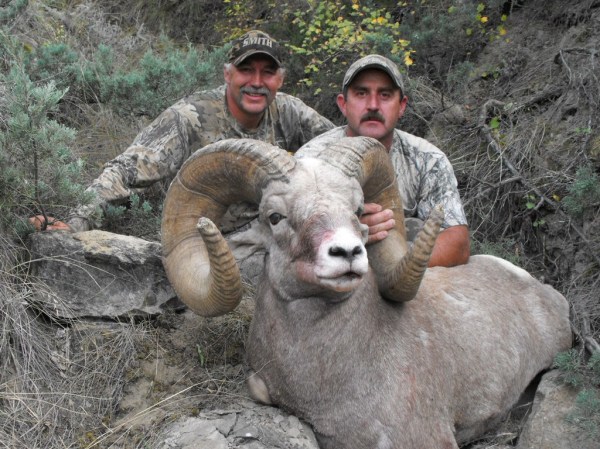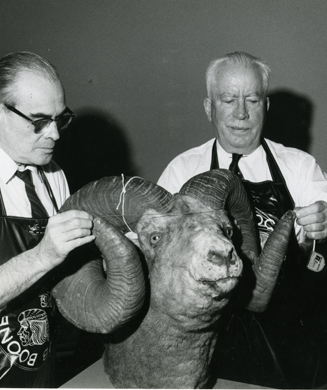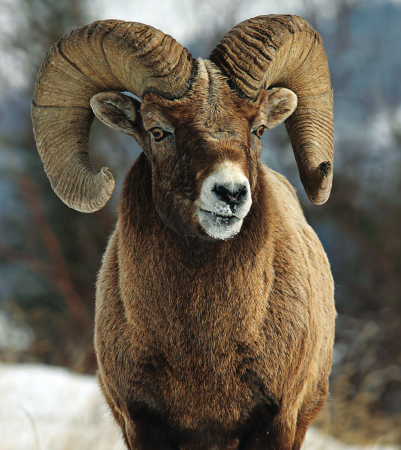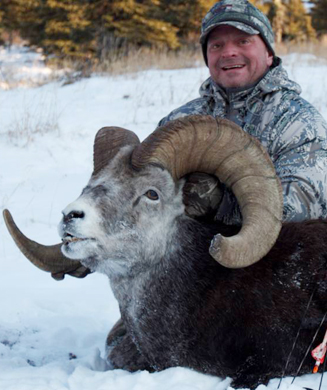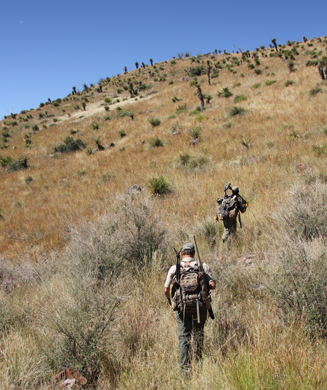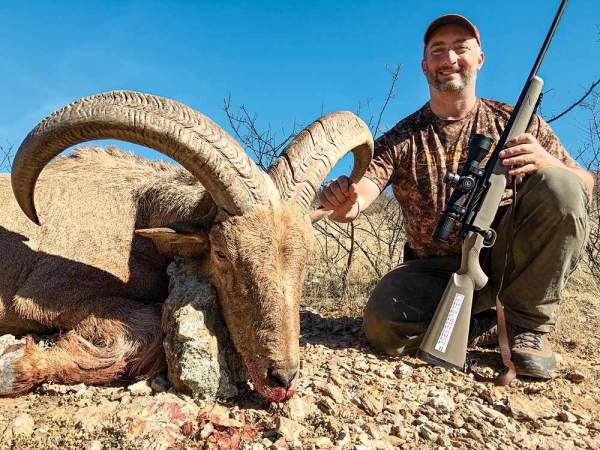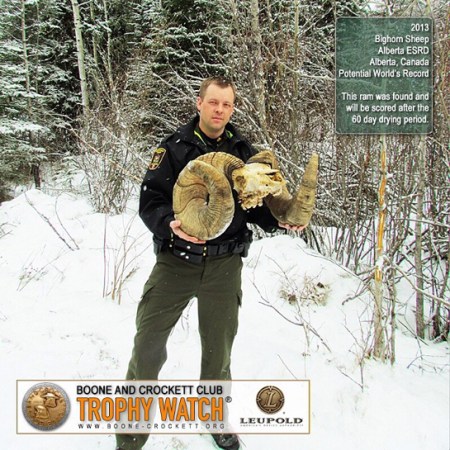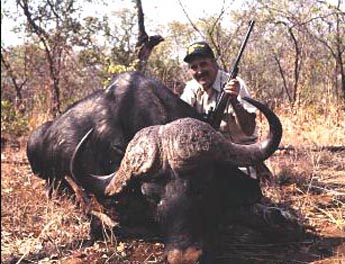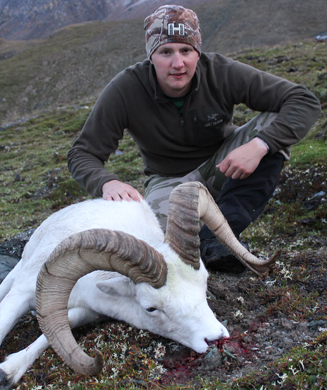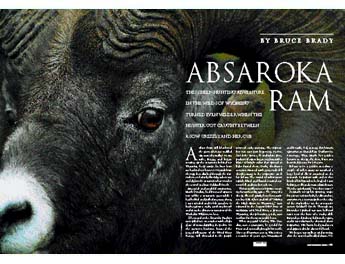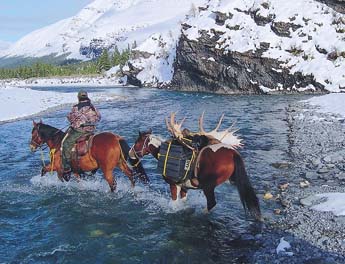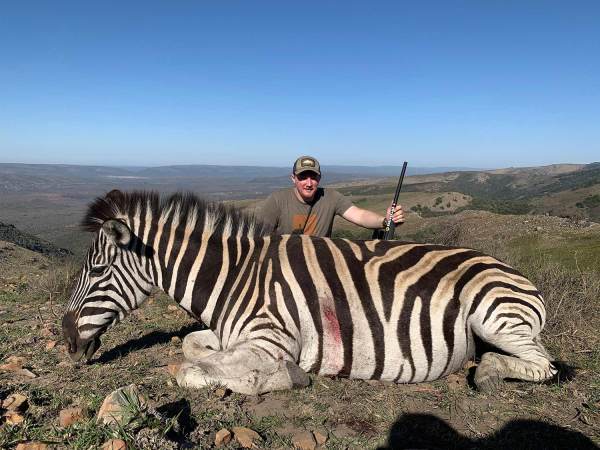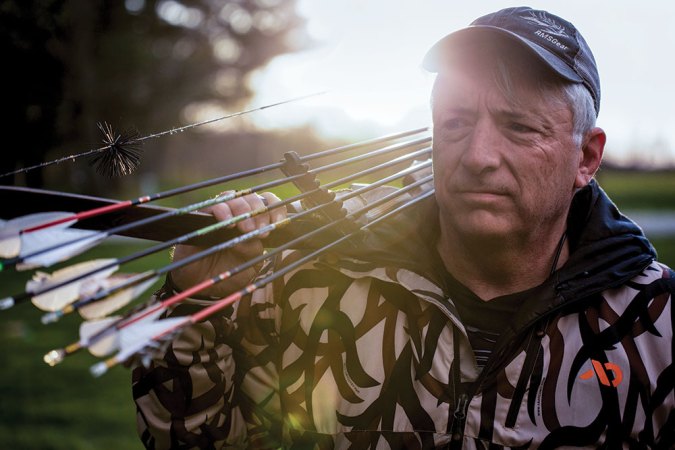There’s a distracted, distant look that old sheep hunters have—a sense that they’re not entirely present in the moment.
As a resident of Alaska, I see this look pretty frequently. I used to dismiss it as just a sign of advancing age, but now I know what causes it. These men might physically be in a grocery store, or fueling their pickup, but mentally they’re in sheep country, pinned down on a scree slope or making the final stalk on a bedded ram.
There is something deeply infectious about hunting wild sheep. The faraway look is a symptom. No matter how many times you do it, you are always leaning into your next sheep hunt.
Last fall, as I sat in the drizzling rain on the steep slope of a remote mountain in interior Alaska, my 10th Dall ram cooling on a rock below me, I realized that I have that same vacant stare I’ve seen in those old hunters.
The Pull of Rams
I was just a kid in Colorado, and hunting already had its hooks in me. But sheep hunting had its own special place in my imagination. It was so implausible, so far out of my reach that I considered it almost mythical. I soaked up every sheep story I could read or persuade someone to tell me. I was infatuated with tales of the remote, rugged, no-man’s-land and hunting the white ghosts that inhabited it.
When my family moved to Alaska, I started encountering those old sheep hunters. Their gaze and stories taught me three things: that they were mortals, not gods; that they had experienced things that words cannot describe; and that I wanted to experience that, too. I had the opportunity, living in Alaska, so the matter of my dream becoming a reality was left only to my determination.
Twelve years ago, I took my first step into ram country. Over these dozen years, I have taken 10 rams.
The same way a ram earns a new growth ring for every year he survives the odds, a sheep hunter grows with the challenges he faces and overcomes on each hunt. With each pack out of the mountains, I have added another growth ring to my experience.
Year 1
Lesson: Accept Gifts
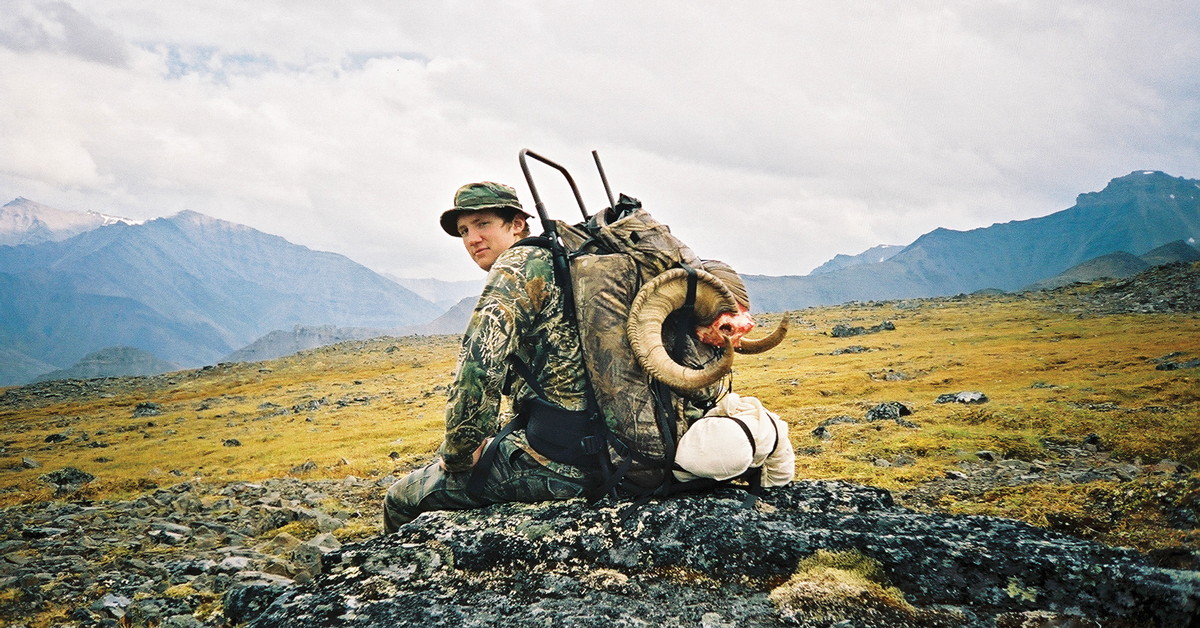
I was lucky enough to lace up my boots for this journey in 2004, when I was 18 years old. With zero experience, an ancient Redfield spotting scope, and a vague idea of where to go, my cousin Clint and I set out on what would become an obsession. That hunt was the single hardest thing I had ever put my mind and body through. The fact that I killed a nice ram was more a result of luck than competence.
On opening morning, Clint and I made a long climb from camp to a point where we could overlook a high basin where we had spotted a group of rams the evening before. Just as we blundered right into them—in easy rifle range—they saw us and busted. We called an audible and sat down, acting like we weren’t after them at all. The herd stopped running and cautiously milled, until the crack from my .30/06 changed my life forever. From the moment I laid my hands on those horns, I knew that was it, I was done for, and only one species really mattered to me anymore. Then the work started. I shivered for 12 hours in the rain under the heaviest pack I had ever shouldered up until then, but you couldn’t have beaten the smile off my face.
Year 2
Lesson: Failure is Motivating
Getting a ram on my first sheep hunt was remarkable, but it overinflated my sense of proficiency. I was in what I call the “one-sheep wonder” phase. I was hard-bit by rams, but looking back on it, I didn’t know anything. The following year, I was back out on opening day, confident that I’d be eating sheep ribs by nightfall. But in 10 days of hard hunting, all I killed was a bull caribou. It was a poor consolation, and my experience showed me just how lucky my freshman year had been, and how little I knew about sheep and sheep hunting. I spent the next year reading any sheep-hunting book I could get my hands on, packing sandbags up a local hill to toughen my body, and scrounging for every piece of gear I thought I might need.
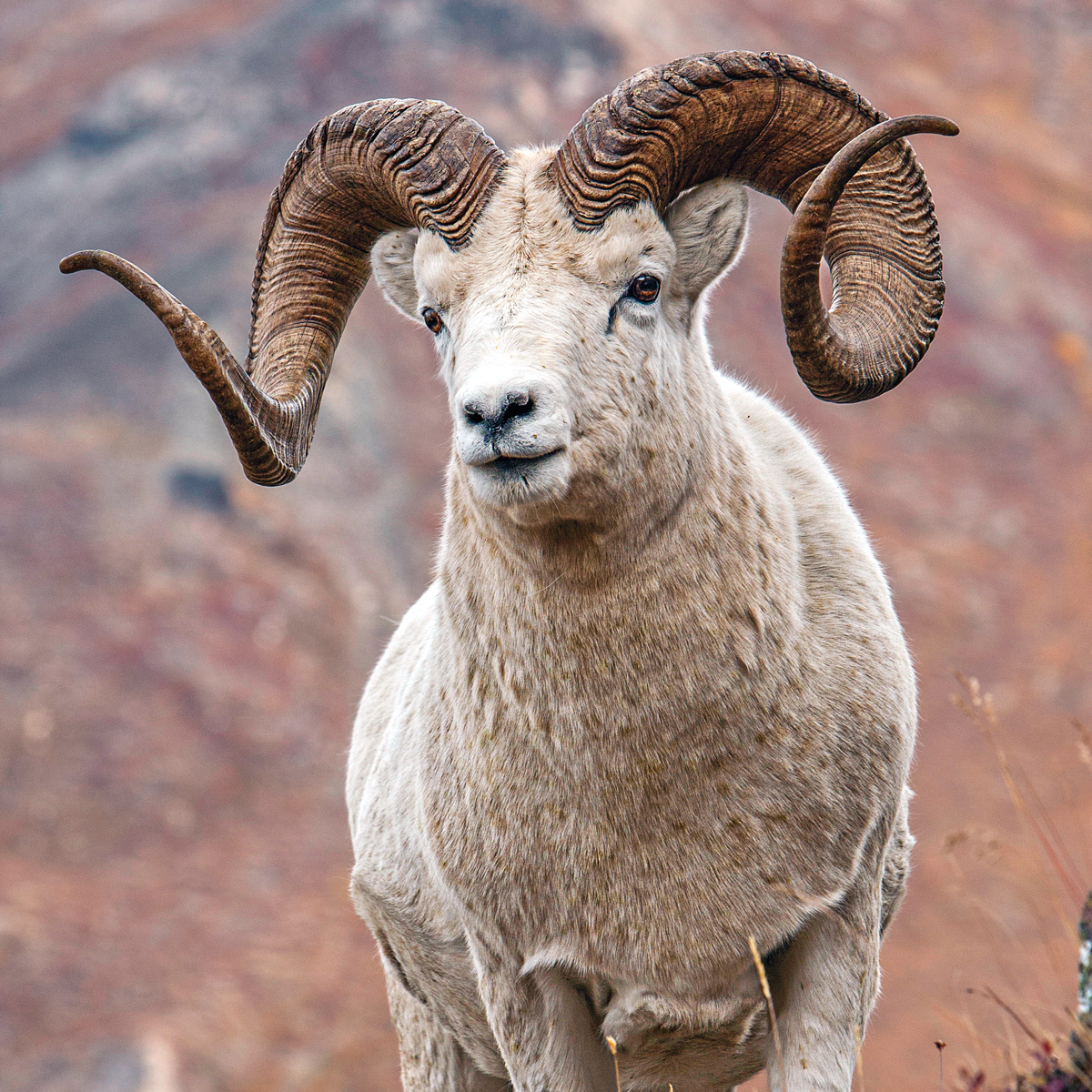
Year 3
Lesson: Zip the Tent
My preseason efforts paid off the next year, as both my buddy Nick and I took nice rams on the first two days of the 2006 season. It took us a day and a half to pack into the area we wanted to hunt, but every step was laced with doubt because we didn’t see a single sheep on the hike in. On the afternoon before the opener, after hiking all day, we peeked over a ridge and spotted three rams half a mile below. We watched them all evening, and I still remember feeling like a kid trying to sleep on Christmas Eve, just burning with anticipation. We crawled out of the tent at 3:30 a.m., after I couldn’t take it any longer, and located the rams. As we made our approach out of sight, the rams moved toward us, and again, they saw us when we saw them, at only 75 yards. I quickly chambered a round, and just before my ram disappeared, snapped off a single shot that anchored him. The following afternoon, Nick was able to tag his first ram after an all-day stalk.
While we were butchering Nick’s ram, rain began to fall, becoming a torrential downpour. We staggered back into camp at midnight, only to find that in our haste to get going that morning, we’d forgotten to shut the rainfly. We spent the rest of that night trying to dry our gear, then the next three days weathering the storm. When the rain finally stopped, we loaded up our gear and rams and endured what is the most brutal 14-hour pack-out I’ve ever made. I’m still reminded of that hunt every time I shoulder a full backpack and my toes start to burn from the nerve damage I did to them on that hike.
Year 4
Lesson: Avoid Others
My dad and I flew into the central Brooks Range on what would be my first fly-out experience. Scouting from the air, we saw two different hunting camps in the canyon we intended to hunt. After landing, we hiked in the opposite direction, hoping to avoid other hunters. But the next morning, opening day, we cut fresh boot tracks coming out of a remote canyon. We kept going, and by midafternoon we reached a spot where we had seen a group of rams from the air the previous day. I spied a rock that looked funny, and through my spotting scope, I saw that it was a freshly dead sub-legal ram. We came to the conclusion that someone had shot it the night before the season, realized it was sub-legal, and left it. The hunting was hard, and I shot the only legal ram we saw. After that, I was determined to hunt well away from other hunters.
Year 5
Lesson: Just Go
The sour experience of 2007 was followed by a worse year. Sometimes, a hunter has to miss a season, whether it’s due to work or other obligations. Although it hardly matters now, I can tell you exactly what I was doing on opening day of 2008: insulating steam piping. It seemed so important at the time to be working instead of in the mountains, but it wasn’t worth it. No one will remember that I was at work that day. I have nightmares about not being able to go sheep hunting, and that’s a good enough reason for me to never miss another season.
**Year 6
Lesson: Take the Ram Offered**
After my lost season, I was more anxious than ever to get back to the mountains. The next year, I headed to a new area with a new hunting buddy, Steve. We had a route planned for the entire hunt, but immediately after we left base camp, we spotted rams about 5 miles away, in the opposite direction of where we were heading. It was impossible to say for sure, but a couple of the rams looked too good for us to continue as intended, so we changed course. The next morning, opening day, as we picked our way up a wide basin, three rams fed into the head of the drainage. Two were solid shooters, so we got out of sight and began closing the distance. We made it to 800 yards, then dropped into a dry creek bed and sprinted to get within 300 yards. We killed both. Our season was over almost as quickly as it had begun, but after missing a year, I wasn’t the slightest bit concerned about that. Both rams were beautiful and imprinted on me the old saying, “Don’t pass up on day 1 an animal that you would happily shoot on day 10.”
**Year 7
Lesson: Going Solo is Golden**
Partly owing to circumstances and partly to prove myself, I went solo into a new area in 2010. I consider a solo Dall hunt to be near the very apex of hunting challenges. It’s a different experience, lonely and liberating. Hunting with a good partner is a smart thing to do both for the help and safety a buddy provides, but going solo allows you to focus completely on your goal and forces you to make decisions and commit to them without having to bounce ideas off someone else.
On opening morning I spotted three rams a couple of miles away. When I got to within about 800 yards, I saw there were actually 27 rams, and two big double broomers. After a two-hour final stalk, pushing myself hard and sucking wind the whole way, I peeked up over a rock and saw that the two broomed rams were 220 yards below me. I couldn’t tell which one was bigger, so I picked the one that gave me the best angle and squeezed the trigger on my .25/06. The next night, after a 17-mile pack back to the airstrip, I savored fire-roasted kabobs and said to myself, “I can do this.” I was finally and truly a sheep hunter.
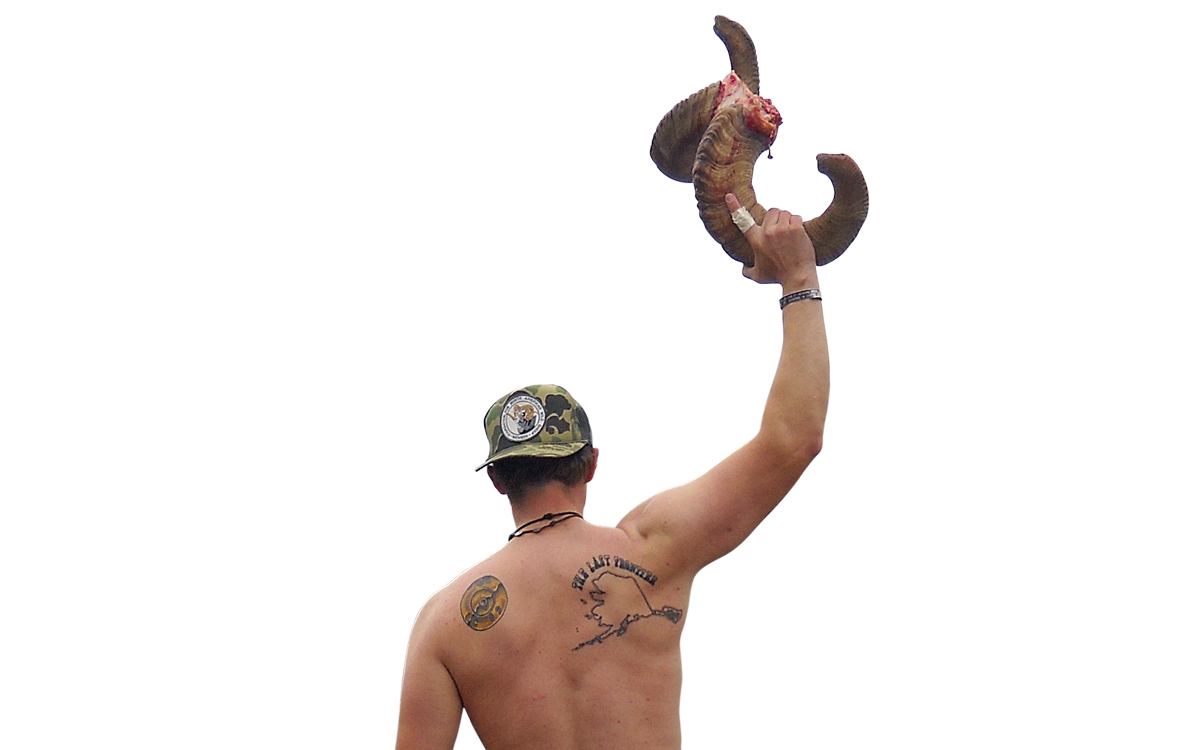
Year 8
Lesson: Savor the Moment
In 2011, I hunted a new area in the Brooks Range with three buddies. The first hour of the season found us hoofing across an open basin, using a soupy fog for cover to set up on a band of rams. We lay on the slope for three hours, waiting for the fog to clear to be 100 percent sure that the rams we had in our scopes were legal. The rams were in the same state of suspension. Through the spotting scope, I watched the biggest ram’s eyes slowly droop, then he would jerk awake. That, combined with the calm night air and the faint clucking of ptarmigan, made it an unforgettable experience. We were back on the hill before light the next morning, and soon I had my sixth ram, a beautiful splintered-horn Fannin.
**Year 9
Lesson: Be Persistent**
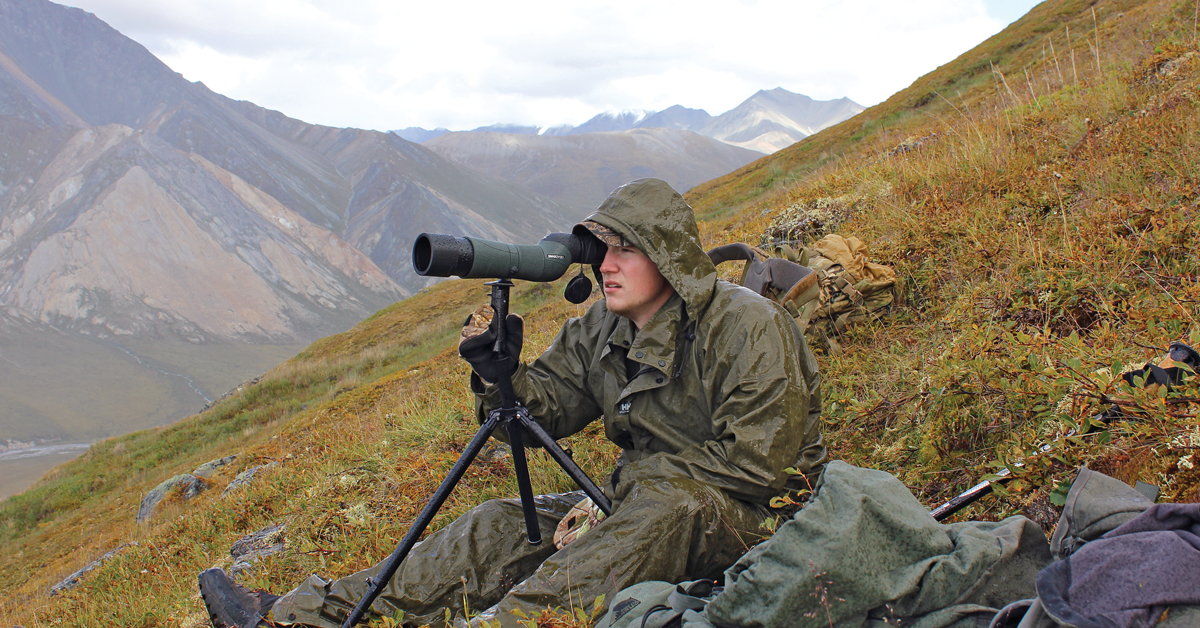
Up until now, I had never blown a stalk, never missed a shot, and killed every ram I had gone after. I knew this was a temporary state. I knew that if you hunt long enough, you are guaranteed to muff a stalk, and you will eventually miss. Both of these hit me hard in 2012. On the second day of the season, we located a large group of rams less than half a mile from where I’d taken mine the year before. There were sheep scattered across the basin, and eventually they congregated into a mass of rams 47 strong. In hindsight, we should have waited, but I was convinced I could make it happen. We tried to stay out of sight while approaching from below, but one of the rams spotted us. When we finally relocated the ram I wanted, at 530 yards, I shot right over his back, four times. I simply didn’t take into account the angle of the shot.
I was in a state of shock at my whiffs, and just fell apart mentally and emotionally. I pulled myself together the next morning and got on a ram at 400 yards. I was ready, finger on the trigger, but the ram’s horns were in front of his ribs. Before I had a shot, the ram jumped up, took off, and didn’t stop until he was over the ridge. I was dejected, but the next day, I found the ram I had missed two days earlier. He wasn’t as big as the one that got away, but there was a satisfaction in finishing the job.
Year 10
Lesson: Exhaustion is Real
In case the lesson of persistence needed reinforcing, 2013 pounded it home. I was back in the same area with the same buddies as 2011, and within a few hours of our boots hitting the ground, the rain began to pour. We split up into pairs to hunt different areas, and headed off into the downpour. It was the longest, coldest, wettest sheep hunt I have ever been on. We had several failed stalks on nice rams where they simply disappeared in the fog. Even with good raingear, moisture permeated everything, and the mercury dropped to 15 degrees at night. I vividly remember waking up to my teeth chattering every hour or so, night after night. Every time a stalk fell to pieces, I wondered how many more climbs I would be able to make.
My partner Tim and I met back up with Steve on day 11, who told us that another member of our group had taken a ram three days earlier. On the afternoon of day 12, we spotted three rams on a bare patch of rock a couple of miles up the canyon. One look through the scope confirmed that the biggest one was the monster ram I almost shot the year before. When I peeked over the ridge, only the two smaller rams remained. I could tell that the bigger of the two was legal, and so I took my eighth ram at last light on the last night we would be able to hunt. It took two days to pack the ram 23 miles back to the airstrip. Tim and I walked 104 miles in 14 days, seeing the sun on only a single day.
Year 11
Lesson: Appreciate Easy Hunts
No two sheep hunts are the same, and the contrast between 2013 and 2014 couldn’t have been greater. I headed back into the mountains with my buddy Frank. After a year to forget the woes of the last season, the slight drizzle on the pack-in didn’t bother us much. That was the last we were to see of the rain. It turned out that the heat and swarms of gnats were as much or more of a pain as the cold had been. We had put together a 14-day plan, but after hiking 16 miles to get to the area we wanted, Frank shot an age-legal ram on opening day. The next day, we saw an even bigger ram casually walk out of a draw. By the time I had looked him over and made sure he, too, was legal, he was at 220 yards, a chip shot for my .27 O’Connor (a .280 AI, necked down to .270). Two rams in two days. After packing our sheep only 4 miles back to a small airstrip, a buddy who was in the area with his Super Cub gave us a ride back to our pick-up point.
Year 12
Lesson: Trust Your Plan
Things weren’t working out as summer frittered away. Frank drew a coveted lottery tag. We agreed that if I helped him, he would come with me after his hunt. We headed out for the opener, and after a hard week, Frank killed a beautiful ram.
I still didn’t have a plan for my hunt, but with every day the season ticked away and my longing for the mountains increased. I couldn’t decide between several different areas, and my day job was getting very busy. I wasn’t going to let a repeat of 2008 happen; if I didn’t get a ram, it wasn’t going to be because I didn’t hunt. Less than a week after Frank’s hunt, I took a three-day weekend to check out an area I knew held rams. It took me a day and a half to get to where I wanted to be, and the fog rolled in as soon as I got there. In the half day I had to hunt, I spotted two rams that turned out to be sub-legal. The next morning I woke up to 6 inches of snow on the tent. My hunt was over.
A week later, Frank and I headed out again, hoping to take advantage of clear weather in a final effort to kill my ram. After packing 14 miles in, we set up in a good spot. For five days, we had every nuisance imaginable foil our hunting. Once it was a herd of caribou, then it was the weather, then sheep that we had patterned simply vanished. On our final day, we located a band and I was able to put my 10th ram on the ground. Although the last day of our pack out was brutal—snow blowing in our faces the entire way—I wouldn’t change a thing. I had taken 10 rams before my 30th birthday, and I almost would have felt as if I’d cheated if it had been easier.
After a dozen years of hunting rams, I think I understand that old sheep hunters’ look. More than simply a reflection on what they have been through, it is an incurable desire to keep going.
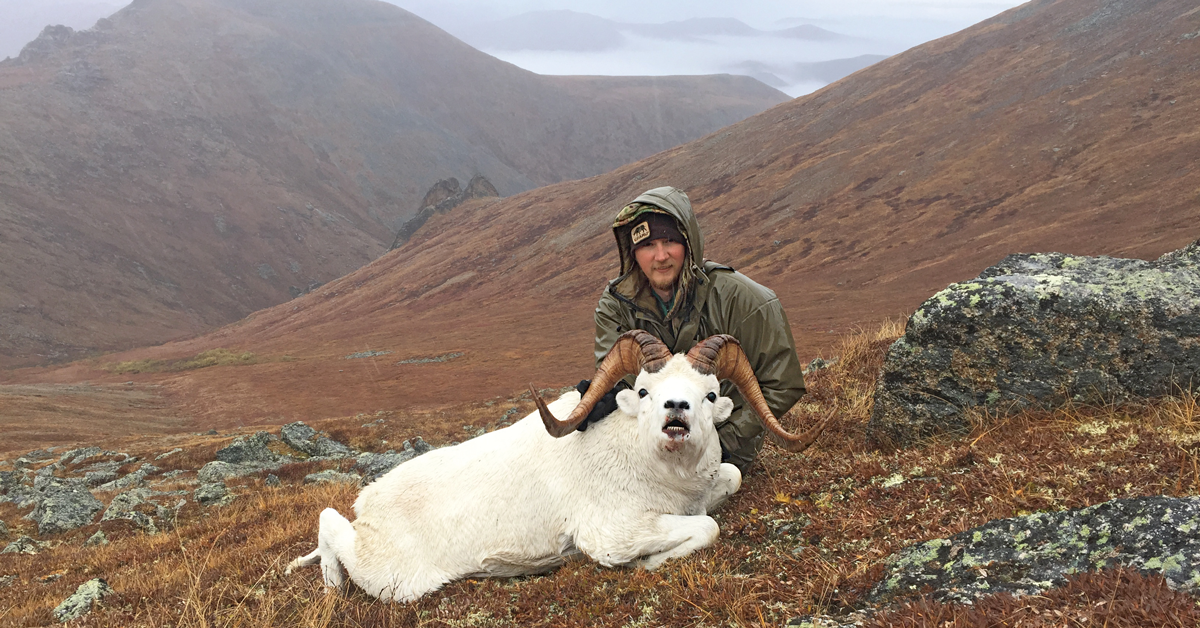
The 8 Rules of Sheep Hunting
Some are absolute. Others are situational. All have been learned the hard way, on the ground in ram country.
1. Lipton soup mix is not good sheep-hunting food. It will give you the runs.
2. Little problems can become big problems very quickly. It’s important to be prepared and pay attention to detail. A sheep hunt is a collage of near misses and close calls, and disaster is usually one misstep away.
3. If you have to convince yourself that a ram’s horns are big enough, he’s not legal. Go find another one. Every year, people let themselves see a bigger ram than what is really there, and they end up losing their horns and a good chunk of change when it’s confiscated by game wardens.
4. Never pass up a good rock to sit on. Whether you’re hiking hard on the way in or loaded heavy on the pack out, spots to take the weight off are rare and precious. Sometimes you’ll see a ram you would have missed if you’d kept walking.
5. If you love oatmeal, don’t take it for your sheep-hunt breakfasts. If you do, you won’t be able to stand it the rest of the year.
6. Never run out of water. Drink as much as you can hold and top off when you leave a water source—and always be on the lookout for the next one.
7. Never drop your pack on a stalk until you are ready to shoot. I learned and re-learned this. If you drop your pack to sneak the last 50 yards, it can quickly turn into half a mile, and it’s easy to lose your gear in the rocks, especially in the evening.
8. Never leave camp without enough gear to safely spend a cold night on the mountain. Sometimes you have to weather a storm or sit on a ram overnight for an opportunity.
